Discovering Cambridge’s art: on mental health
We talk to Sylvie Field and Micha Frazer-Carroll, two student creatives who turn to art as a safe haven for their mental health
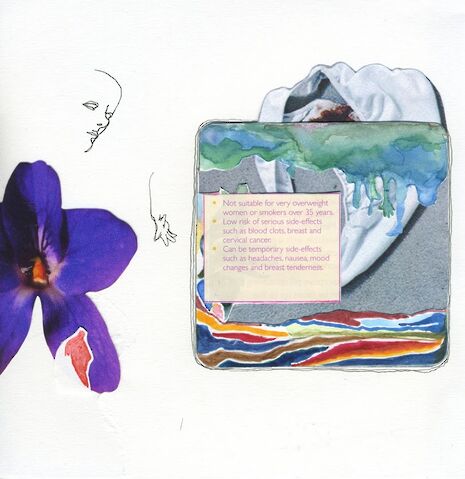
Sylvie Field is a student creative, whose work often focuses on mental health and women’s experiences. Speaking to Edwin, she talks about the therapeutic nature of art and its ability to alleviate her feeling of entrapment caused by a form of contraception. Micha Frazer-Carroll, meanwhile, is a former CUSU welfare officer and founder of creative online platform Blueprint. She discusses her experiences with safe spaces – Blueprint and zines – where she and marginalised people can talk about mental health and show solidarity with each other.
Sylvie Field, student artist
There is so much meaning in this artwork! I must say that I find it incredibly captivating and honest. In the artwork, you have conveyed a connection between periods and medicine. What brought about such an exploration?
Thank you so much! Recently, I’ve been drawing and collaging about my experiences with a form of contraception that really affected me both mentally and physically. I really lost touch with my body — it all made me question my relationship with myself. The image of the underwear is by Corinne Day, from her photo diary. I like the idea of documenting your body like that, honestly and openly. And documenting the everyday processes of dealing with changes in your body. Maybe it’s something painful to make an image about at first, but after you’ve done it, it doesn’t feel as bad.
In what ways would you say that your artwork relates to mental health?
I’ve always been interested in trying to capture feelings and atmospheres with colours. And this question of subjectivity and my own experiences is quite inherently linked to my mental health. This is definitely something I was particularly trying to do in the oil painting, which is a couple of years old, but I still like it. Nowadays, I also like to think of the act of making art as a kind of therapy. I’ve always liked making things that are detailed, or have some kind of repeated pattern: something that really requires me to focus and switch off from whatever I’m thinking about. In the collage, for example, there is a little part of a Michael Landy drawing that I copied – I copied it pretty badly, but that’s fine, because that’s not the point. Your product is something you can’t control and it always turns out differently than you were expecting. That’s very calming once you accept it.
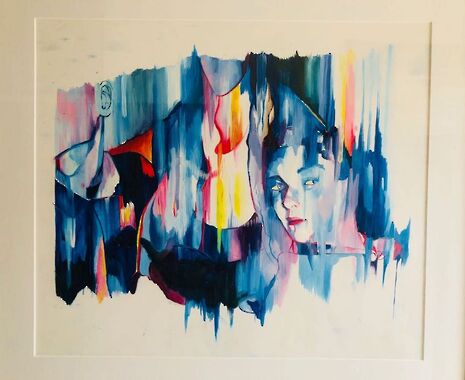
Do you think that periods, medicines to deal with periods, and the effects that these have on mental health are not spoken enough of?
Definitely. A lot of women try different forms of contraception, often to regulate or stop their periods. Deciding to go on contraception can be really liberating, because it’s a choice that you’ve made about your own body, which is by nature something you can’t choose. And it’s such an amazing privilege that we have so many options in this country! But I don’t think this means that we shouldn’t discuss the effects they can have on our mental health, and the sacrifices of wellbeing they often require us to make. If there’s a hormone imbalance that’s causing mental health problems or exacerbating them it isn’t always obvious, even if the effects are strong. GPs are often really reluctant to suggest that your contraception might be having this effect. In a pamphlet which was supposed to be a pretty thorough outline of the different options, there was only one tiny mention of possible ‘mood changes’. That’s the bit I used in the collage. It makes me sad to think about how many women must be struggling with depression and they haven’t thought that it might be being worsened by their contraception.
In what ways can art de-stigmatise mental health issues that are associated with periods?
Making imagery out of aspects of life that feel trapping, and hard to acknowledge, like problems with mental health and periods, can mean that they don’t feel trapping any more. If it’s something you can draw or paint about, and you can engage with it that way on your own terms, then you can talk to others about it. And that doesn’t have to just be with women; I’d love for these things to be discussed openly with whomever, without apologising, without it being an uncomfortable or awkward subject – because it’s such a huge part of our lives! That Corinne Day image stayed with me, because she really didn’t care who saw her stained underwear, or what they thought about it, and I didn’t care either.
Micha Frazer-Carroll, founder of Blueprint
What made you start Blueprint, and particularly why did you choose to make the website and articles feature loads of illustrations?
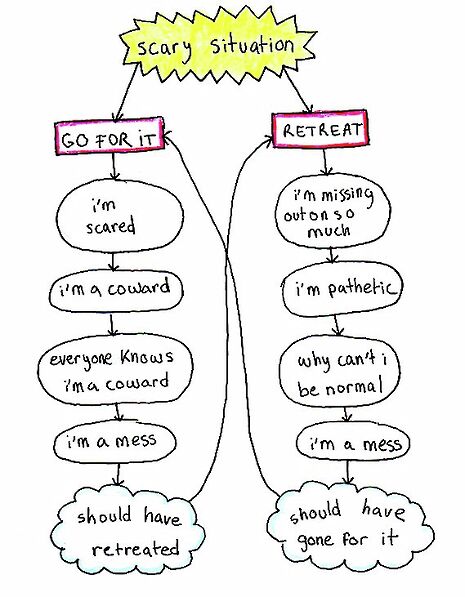
I started Blueprint after going through a period of my own serious mental ill health in second year. During that period of my life my main places of solace were safe spaces in Cambridge, particularly online, where marginalised people would talk about mental health and offer support and solidarity to each other. I wanted to capture that energy in the form of an online platform, where people who were struggling could share what they had been through, either to help them work through things, or to connect to others and exchange advice and support.
I always wanted Blueprint to have a highly visual element – it adds new ways to engage with and articulate complex ideas. When you’re talking about cognitive processes and trains of thought, that’s important. I’d been really inspired by magazines like ROOKIE – which is full of vibrant collages and each piece often feels like a glimpse into the author’s diary or scrapbook. Blueprint is also undoubtedly inspired by a long tradition of zine culture, which turns that glorified image of really polished glossy magazines on its head, and takes back power from overarching media structures. I always find illustrations and a bit of scruffiness here and there intensely genuine and personal.
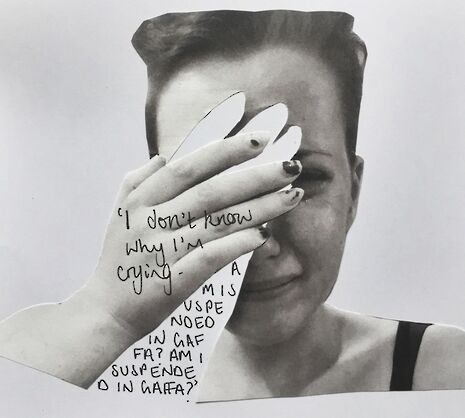
Do you think that Blueprint and other zines that are dedicated to mental health fill the gap that therapy sometimes fails to do?
I think we have to be careful with narratives around less intensive mental health initiatives. On the one hand, I know, and am thankful, that platforms like Blueprint help people through difficult times. They directly engage creativity and connectedness in a way that most traditional and formal types of ‘treatment’ do not, and undoubtedly offer appropriate comfort to those who align themselves with mental health difficulties but aren’t sure if they fall into that group. But therapy needs funding and we have to be careful not to allow others to weaponise volunteer-run initiatives as a way to cut back on treatment. I think engagement with creativity can be invaluable alongside therapy – or within it – in spaces like arts therapy.
How effective would you say that art is at bettering mental health issues?
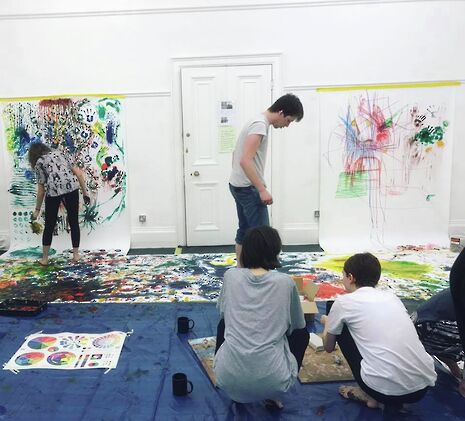
I don’t think that’s a question that can be answered with a blanket statement – experiences of mental health are deeply personal by definition and what works well for one person might even be damaging for another. Some particularly creative people I know locate art and visualising their feelings as a central part of staying well. But it’s a slow-burning practice that is always part of a bigger routine. And, also, sometimes we might find ourselves in situations where we can’t hold out for a slow-burning intervention, in which case activities like this are of course less relevant.
But as I have mentioned, arts therapies are a recognised and increasingly respected therapeutic method – the benefits it presents include engagement with the senses, mindfulness, and the process of channelling your mind and body into creating something concrete, tangible, and sometimes beautiful.
 News / Eight Cambridge researchers awarded €17m in ERC research grants27 December 2025
News / Eight Cambridge researchers awarded €17m in ERC research grants27 December 2025 News / Downing investigates ‘mysterious’ underground burial vault 29 December 2025
News / Downing investigates ‘mysterious’ underground burial vault 29 December 2025 News / News in Brief: carols, card games, and canine calamities28 December 2025
News / News in Brief: carols, card games, and canine calamities28 December 2025 Sport / Hard work, heartbreak and hope: international gymnast Maddie Marshall’s journey 29 December 2025
Sport / Hard work, heartbreak and hope: international gymnast Maddie Marshall’s journey 29 December 2025 Interviews / Meet Juan Michel, Cambridge’s multilingual musician29 December 2025
Interviews / Meet Juan Michel, Cambridge’s multilingual musician29 December 2025






